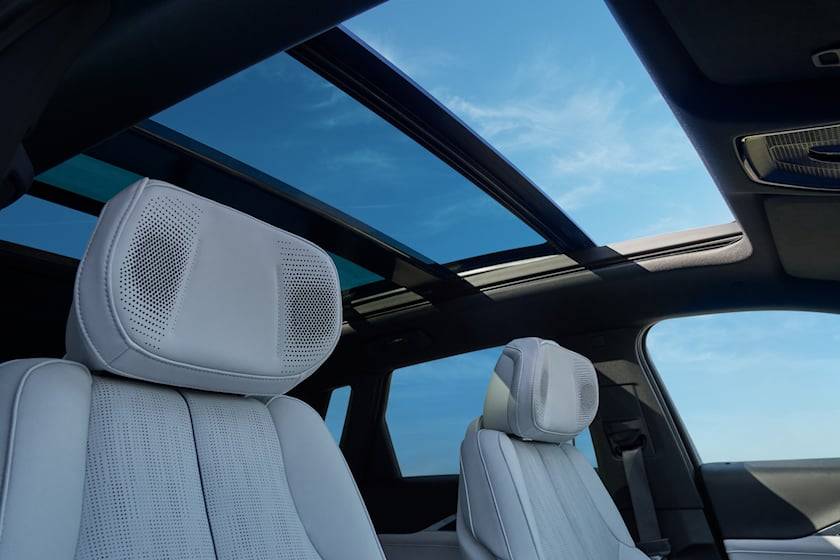Imagine having a crystal-clear sound when you open the convertible roof without turning a knob.
By automatically adapting to changing vehicle conditions like open windows, sunroofs, or removable roof panels, General Motors hopes to improve in-car audio systems and warning sounds.
An automatic detection system that would detect changes in the state of the vehicle's body and automatically adjust various controls and settings to ensure that occupants can clearly hear everything they need to hear is described in a new patent that was discovered by CarBuzz and filed with the United States Patent and Trademark Office.
The invention can be used to change the balance, treble, and bass as well as the entertainment volume. Additionally, it includes alerts and warning chimes in its scope.
There are many different ways that vehicles can have panels that can be changed, according to General Motors. These include, but are not limited to, windows, sunroofs, doors that can be removed, and targa tops. GM's patent sketch appears to be based on a Toyota Supra T-Top from the A80 generation.
The fundamental premise is that the volume of the warning chimes and the sound system must be adjusted to account for wind noise and other external noises when a window is opened, a door is removed (think Jeep Wrangler), or a roof panel is removed. The brand-new system from General Motors envisions multiple sensors to ascertain the degree to which the noise-containing structure of the vehicle has changed. From there, it suggests a number of options for how the audio can be altered to accommodate the change.
Microphones, light meters, and other sensors are among the many options. The first is obvious because an open window makes the cabin feel bigger, especially if the side windows are made of acoustic glass. However, the light meter is a clever addition that can tell if a sunroof or convertible roof is open by how bright the cabin is.
A new computing system can reduce noise intrusion in a variety of ways by utilizing one or more of these sensors.
The microphone sensors would cause one of the computing elements to adjust the traditional sound system's noise-canceling functionality, emitting a counter-frequency to reduce the additional noise, in the event that an open window disrupts the sound at a constant frequency, such as when wind noise travels at a constant speed.
However, if the light sensor is also activated, as would happen if you removed the targa panels from your C8 Corvette Coupe, the computer would recognize that the roof has been opened and combine the noise-canceling frequency with an increase in volume and possibly a change to the balance and equalizer settings.
Active Noise Cancellation for Automobiles Ford automobiles like the 2024 Cadillac Lyriq, which comes with an optional AKG Studio sound system and headrest speakers that can be used to block out noise from an open sunroof, offer even more adaptability.
GM is able to fine-tune each sensor to look for specific frequencies and sound levels by using multiple sensors and processor modules rather than just one, and the processors are able to choose the best course of action, sometimes even concluding that no change is required.
A semi-truck passing your car may, for instance, cause an increase in volume. The processors would decide that it was just a passing noise and make no adjustments to the audio system if the sensors found that the vehicle had not changed. The system could make adjustments if the noise persists for an extended period of time.
Although Cadillac may appear overly complicated, such technology will become increasingly important in the future of automobile safety regulations.
As EVs become more common and engine noise becomes less of a concern, automakers are adding more sound deadening to vehicles to prevent wind and tire noise from entering the cabin.A driver may turn up the volume to listen to their favorite songs, but they may not hear a warning chime from a crash avoidance system because an open window can significantly alter the car's noise levels.
This new technology eliminates a lot of the guesswork, ensures that safety chimes can be heard at all times, and lets you fully enjoy your music, podcasts, or whatever else you like to listen to—we don't judge.


